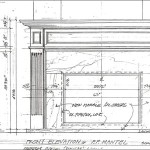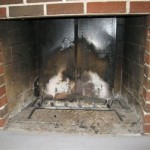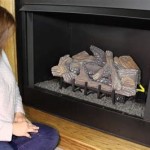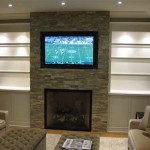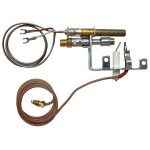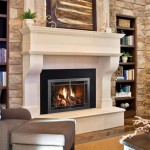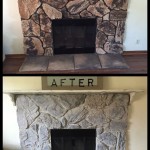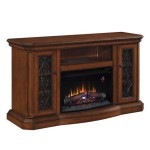Outdoor Gas Fireplace: Enjoying Warmth Without a Chimney
An outdoor gas fireplace offers a convenient and aesthetically pleasing solution for extending the usability of outdoor spaces, particularly during cooler months. One of the most attractive features of many outdoor gas fireplaces is the ability to operate without a traditional chimney. This design simplification reduces installation costs and allows for greater flexibility in placement within a patio, deck, or garden setting. However, understanding the nuances of vent-free operation and relevant safety considerations is critical for homeowners considering this option.
The absence of a chimney in these fireplaces is achieved through specific design and operational principles. Unlike wood-burning fireplaces that necessitate a chimney to expel smoke and combustion byproducts, gas fireplaces are designed for more complete combustion. This reduces the production of potentially harmful gases and particulate matter. The key lies in the engineering of the burner system and the regulations surrounding the type and quality of gas used. These factors, taken together, allow for a controlled and relatively clean burn, minimizing the need for a dedicated venting system.
While the term "vent-free" or "chimney-free" is commonly used, it is important to acknowledge that these fireplaces do, in fact, release small amounts of combustion byproducts into the surrounding air. Therefore, proper ventilation remains a crucial consideration. The level of ventilation required is determined by the fireplace's BTU output (British Thermal Units, a measure of heat output) and the size of the space where it is located. Local building codes often stipulate minimum room volumes and ventilation requirements to ensure safe operation.
Understanding Vent-Free Technology
The functionality of vent-free gas fireplaces relies on a few core design principles. The fireplace is engineered to burn gas efficiently, maximizing heat output while minimizing the creation of carbon monoxide, nitrogen dioxide, and unburned hydrocarbons. Advanced burner technology, including oxygen depletion sensors (ODS), plays a vital role in safety. The ODS monitors the oxygen level in the room and automatically shuts off the gas supply if the oxygen level drops below a safe threshold. This is a critical safety feature that prevents carbon monoxide poisoning, a significant risk associated with incomplete combustion.
Further enhancement of the combustion process is sometimes achieved through catalytic converters built into the fireplace. These converters oxidize remaining pollutants into less harmful substances like carbon dioxide and water vapor. However, it's vital to understand that no vent-free fireplace can completely eliminate all combustion byproducts. Dilution through adequate ventilation remains paramount to maintaining air quality.
Furthermore, the design of vent-free fireplaces usually incorporates specific restrictions on the type of fuel used. Generally, these fireplaces are designed to operate exclusively with either natural gas or propane, and it is crucial to adhere to the manufacturer's specifications regarding fuel type. Attempting to use an alternative fuel source can result in inefficient combustion, production of dangerous levels of pollutants, and potential damage to the fireplace itself.
Evaluating Ventilation Requirements
While outdoor settings inherently provide more ventilation than enclosed indoor spaces, simply placing a vent-free fireplace outdoors does not guarantee safe operation. The degree of enclosure around the fireplace significantly impacts ventilation effectiveness. A fireplace positioned under a completely covered patio with enclosed sides will require more ventilation than one situated in a completely open area. The manufacturer's instructions and local building codes provide detailed guidance on ventilation requirements based on the specific fireplace model and the characteristics of the outdoor space.
When assessing ventilation, consider the volume of the space where the fireplace will be used. A larger space naturally dilutes combustion byproducts more effectively than a smaller one. Also, consider the presence of any windbreaks or obstructions that might impede natural airflow. If the outdoor space is partially enclosed, ensuring adequate cross-ventilation through strategically placed openings is essential. Regularly monitoring the air quality, especially during periods of extended use, is also recommended. Carbon monoxide detectors, designed for outdoor use, can provide an additional layer of safety.
Another important element is the proper installation of the gas line. This should be entrusted to a qualified professional who can ensure that the gas line is properly sized, connected, and leak-tested. Improper gas line installation poses a significant risk of gas leaks, which can create fire and explosion hazards.
Safety Considerations and Best Practices
Operating an outdoor vent-free gas fireplace safely requires diligence and adherence to established guidelines. It’s imperative to read and understand the manufacturer's instructions thoroughly before installing or using the fireplace. These instructions outline specific safety precautions, maintenance requirements, and troubleshooting tips.
Regular maintenance is crucial for ensuring continued safe and efficient operation. This includes periodic inspection of the burner assembly, gas line connections, and oxygen depletion sensor. Cleaning the burner ports regularly prevents clogs that can lead to incomplete combustion. Furthermore, ensuring that the fireplace is free from debris, such as leaves or insects, that could obstruct airflow is important.
Never use the fireplace for cooking or drying clothes. These activities can introduce contaminants into the combustion chamber, impairing its function and potentially leading to the production of harmful gases. Also, never leave the fireplace unattended while it is in operation. Constant monitoring allows for prompt detection and correction of any potential problems. Furthermore, ensure that children and pets are kept a safe distance from the fireplace to prevent burns or other injuries.
Finally, it is of paramount importance to install and maintain working carbon monoxide detectors in or near any space where the fireplace is used. These detectors provide an early warning of carbon monoxide buildup, allowing occupants to evacuate the area before dangerous levels are reached. The placement of carbon monoxide detectors should be in accordance with the manufacturer's recommendations and local regulations.
The appeal of an outdoor gas fireplace without a chimney lies in its convenience and aesthetic versatility. However, responsible ownership requires a comprehensive understanding of the underlying technology, ventilation requirements, and safety considerations. By adhering to best practices and prioritizing safety, homeowners can enjoy the warmth and ambiance of an outdoor gas fireplace while minimizing potential risks.

Best And No 1 Outdoor Gas Fireplace Elegant Fireside Patio

Napoleon Riverside 42 Clean Face Outdoor Gas Fireplace Gss42cfn The
.aspx?strip=all)
5 Benefits Of Outdoor Fireplaces Regency

Outdoor Gas Fireplaces Valor
:max_bytes(150000):strip_icc()/ventless-gas-fireplaces-4160746-hero-f9d4bdcd9bd446eb84406de306f790ba.jpg?strip=all)
How To Pick Out A Ventless Gas Fireplace

Why An Outdoor Fireplace Is Better Than Building One

Majestic Vesper 36 Inch Outdoor Vent Free Gas Fireplace Vofb36 North Country Fire

36 Inch Vesper Outdoor Gas Fireplace Fine S

Escea Ef5000 Outdoor Gas Fireplace Fires

Fires Choices For Homes Without Chimneys Wakefords Fireplaces And Stoves
Related Posts

